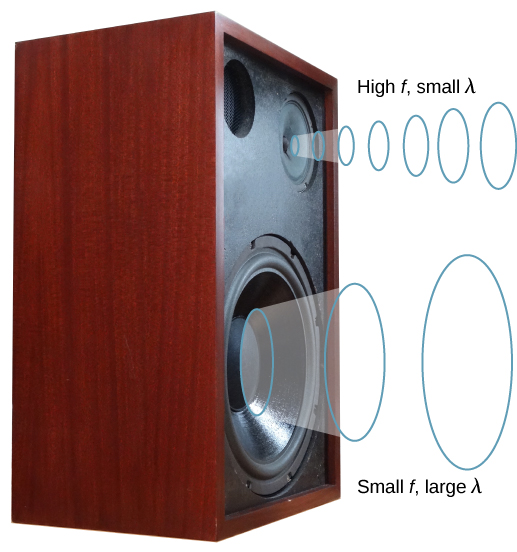| << Chapter < Page | Chapter >> Page > |
The equation for the speed of sound in air can be simplified to give the equation for the speed of sound in air as a function of absolute temperature:
One of the more important properties of sound is that its speed is nearly independent of the frequency. This independence is certainly true in open air for sounds in the audible range. If this independence were not true, you would certainly notice it for music played by a marching band in a football stadium, for example. Suppose that high-frequency sounds traveled faster—then the farther you were from the band, the more the sound from the low-pitch instruments would lag that from the high-pitch ones. But the music from all instruments arrives in cadence independent of distance, so all frequencies must travel at nearly the same speed. Recall that
In a given medium under fixed conditions, v is constant, so there is a relationship between f and the higher the frequency, the smaller the wavelength ( [link] ).

The speed of sound can change when sound travels from one medium to another, but the frequency usually remains the same. This is similar to the frequency of a wave on a string being equal to the frequency of the force oscillating the string. If v changes and f remains the same, then the wavelength must change. That is, because , the higher the speed of a sound, the greater its wavelength for a given frequency.
Check Your Understanding Imagine you observe two firework shells explode. You hear the explosion of one as soon as you see it. However, you see the other shell for several milliseconds before you hear the explosion. Explain why this is so.
Sound and light both travel at definite speeds, and the speed of sound is slower than the speed of light. The first shell is probably very close by, so the speed difference is not noticeable. The second shell is farther away, so the light arrives at your eyes noticeably sooner than the sound wave arrives at your ears.

Notification Switch
Would you like to follow the 'University physics volume 1' conversation and receive update notifications?